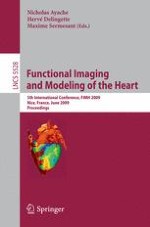This book constitutes the refereed proceedings of the 5th International Conference on Functional Imaging and Modeling of the Heart, FIMH 2009, held in Nice, France in June 2009. The 54 revised full papers presented were carefully reviewed and selected from numerous submissions. The contributions cover topics such as cardiac imaging and electrophysiology, cardiac architecture imaging and analysis, cardiac imaging, cardiac electrophysiology, cardiac motion estimation, cardiac mechanics, cardiac image analysis, cardiac biophysical simulation, cardiac research platforms, and cardiac anatomical and functional imaging.
